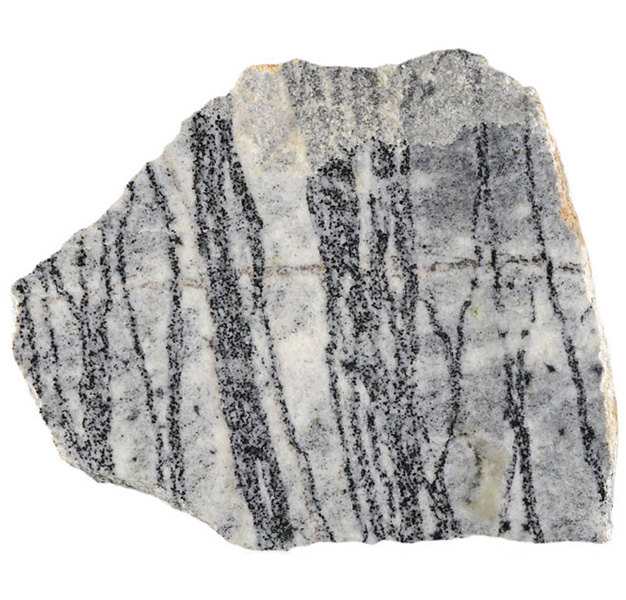
Fact sheet
This sample of marble formed by contact metamorphism of limestone by the Paleocene age Beinn An Dubhaich Granite (Skye Eastern Red Hills Centre) on the Isle of Skye. The original sedimentary limestone was part of the Durness Limestone group, which was originally deposited in the Cambrian period.
The thin section is dominated by dusty Mg-rich carbonate grains with many deformation bands. There are also many circular bundles of white brucite crystals which appear as single zoned grains but between crossed polars they are revealed to be many brucite fibres in each grain. High relief pink coloured garnet is evident in the upper left area of the section, and is isotropic between crossed polars. Large areas of pale olivine are strongly cracked and appear to be broken into many small sub-grains showing bright second order birefringence colours which can be distigushed from the higher order orange and green of the carbonate.
The United Kingdom Virtual Microscope (UKVM) collection consists of igneous, sedimentary and metamorphic rocks from around the UK.
It is intended as a teaching resource, helping to tell the story of the common rock types and how they form, and reflecting the history of the UK at the margins of the continent of Europe. The collection is a series of teaching sets, for example igneous rocks from the North Atlantic Igneous Province and SW England; high-temperature metamorphic rocks from Scotland and low-temperature metamorphic rocks from Wales; and sedimentary rocks, including English limestones and sandstones.






